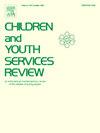Mindful parenting and preschoolers’ digital overuse: exploring the roles of executive function and gender differences
IF 1.7
2区 社会学
Q1 FAMILY STUDIES
引用次数: 0
Abstract
The present study explored bidirectional relationships among mindful parenting (MP), child executive function (EF), and child digital overuse (DO) by using a longitudinal method. A total of 1,244 Chinese preschooler (50.3 % boys; age: M = 3.90 years, SD = 0.78) were assessed at two time points, one year apart. Using cross-lagged panel analysis, we found that MP positively predicted EF (β = 0.11, p < 0.001) and negatively predicted DO (β = −0.074, p < 0.05) in children over time, but the reverse was not significant. Additionally, there were bidirectional and negative associations between EF and DO (βEF-T1→DO-T2 = −0.079, p < 0.05; βDO-T1→EF-T2 = −0.082, p < 0.01) in preschooler. Child’s EF significantly mediated the relationship between MP and child’s DO (β = −2.00, p < 0.05, 95 %CI: −0.42, −0.06), with the mediating effect of child executive function at T2 being stronger than at T1. Nevertheless, these findings may not apply to all preschoolers, as our study observed potential gender differences in these associations. Specifically, for boys, there are bidirectional and negative associations between EF and DO (βEF-T1→DO-T2 = −0.14, p < 0.01; βDO-T1→EF-T2 = −0.12, p < 0.01). However, MP neither predicts boys’ EF nor their DO. In contrast, for girls, MP predicts both girls’ EF (β = 0.15, p < 0.01) and their DO (β = −0.11, p < 0.01), though no bidirectional association between EF and DO existed. The implications for the current study are also discussed.
正念育儿与学龄前儿童数码产品过度使用:探索执行功能和性别差异的作用
本研究采用纵向方法探讨了正念教养、儿童执行功能和儿童数字过度使用之间的双向关系。共1244名中国学龄前儿童(50.3%的男孩;年龄:M = 3.90岁,SD = 0.78)在两个时间点进行评估,间隔1年。通过交叉滞后面板分析,我们发现MP正预测EF (β = 0.11, p <;0.001),负向预测DO (β = - 0.074, p <;0.05),反之则无显著性差异。EF与DO呈双向负相关(βEF-T1→DO- t2 = - 0.079, p <;0.05;βDO-T1→EF-T2 = - 0.082, p <;0.01)。儿童EF显著介导了MP和DO之间的关系(β = - 2.00, p <;0.05, 95% CI:−0.42,−0.06),儿童执行功能在T2的中介作用强于T1。然而,这些发现可能并不适用于所有学龄前儿童,因为我们的研究观察到了这些关联中潜在的性别差异。具体而言,对于男孩来说,EF和DO之间存在双向负相关(βEF-T1→DO- t2 = - 0.14, p <;0.01;βDO-T1→EF-T2 = - 0.12, p <;0.01)。然而,MP既不能预测男孩的EF也不能预测他们的DO。相比之下,对于女孩来说,MP可以预测女孩的EF (β = 0.15, p <;0.01)和DO (β = - 0.11, p <;0.01),但EF与DO之间不存在双向关联。本文还讨论了本研究的意义。
本文章由计算机程序翻译,如有差异,请以英文原文为准。
求助全文
约1分钟内获得全文
求助全文
来源期刊

Children and Youth Services Review
Multiple-
CiteScore
6.30
自引率
6.10%
发文量
303
期刊介绍:
Children and Youth Services Review is an interdisciplinary forum for critical scholarship regarding service programs for children and youth. The journal will publish full-length articles, current research and policy notes, and book reviews.
 求助内容:
求助内容: 应助结果提醒方式:
应助结果提醒方式:


